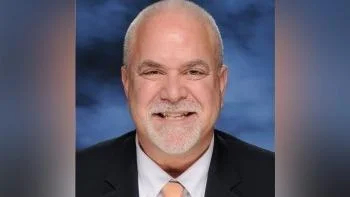Village of Gurnee Planning and Zoning Board met Oct. 19.
Here is the minutes provided by the board:
1. Call to Order and Roll Call
The meeting was called to order at 7:30 p.m.
Planning and Zoning Board Members Present: Chairman James Sula, Brian Baugh, Tim Garrity, David Nordentoft, and Josh Pejsach (remotely)
Planning and Zoning Members Absent: Edwin Paff and Laura Reilly
Other Officials Present: David Ziegler, Community Development Director; Tracy Velkover, Planning Manager; and Bryan Winter, Village Attorney
Mr. Sula announced that, in accordance with the Governor’s Executive Order in response to COVID-19 #2020-07, in-person attendance requirements under the Open Meeting Act have been suspended and relaxed. Therefore, tonight certain members of the Planning & Zoning Board, staff, and the Village Attorney will be participating remotely and that will be reflected in the minutes.
2. Pledge of Allegiance
3. Approval of the PZB’s July 15, 2020 Meeting Minutes
Mr. Baugh motioned, seconded by Mr. Garrity, to approve the minutes from the PZB meeting of July 15, 2020, as presented.
Voice vote:
All "Ayes,” no "Nays," none abstaining Motion carried: 5-0-0
4. Comprehensive Land Use Plan: Compass 2040
Ms. Velkover introduced this item by stating that a Comprehensive Land Use Plan is a community’s guide to the community’s physical, social, and economic development. The plan helps form other regulatory documents that implement the community’s goals and objectives, which are outlined in the plan. The existing Comprehensive Land Use Plan was last updated in 1997. Staff and the PZB have been working with the Village’s consultant, Camiros, over the last several years, on the update of the Village’s Comprehensive Land Use Plan. Public workshops and meetings have been held over this time frame in order to review the Village’s goals and objective, policies, existing conditions, existing land use map, future land use map (based on goals and objectives), Sub-Area Plans, and a first full draft of the plan. Arista Strungys, from Camiros, is here to present the draft plan.
As this was a Public Hearing, Mr. Sula confirmed with Ms. Velkover that no one from the public was present either in person or remotely. He then asked that Ms. Arista Strungys, with Camiros, be sworn in by Mr. Winter.
He turned the floor over to Ms. Strungys for her presentation.
Ms. Strungys stated that the Village’s draft Comprehensive Land Use Plan, COMPASS 2040, is a vision for Gurnee’s future, looking at a typical 20 year planning horizon. She noted that the plan is organized into 5 main sections that talk about Land Use, Community Character Areas, Economic Development, Environment and Open Space, and Mobility. She noted that the cornerstone of the plan rests in the Vision, which is established in the early portion of the document. It talks about the future that is envisioned for Gurnee moving forward. She didn’t read through the whole thing, but instead highlighted a number of key points. Gurnee is envisioned to be a place where you can work, live, and play, and be more specifically:
• A fun destination location
• A place to raise your family
• A place that has a balance of land uses
• A place that has a diverse amount of housing stock
• A place that can accommodate people with a range of incomes and ages
• A place with good public services and public transport
Ms. Strungys noted that in the beginning of the plan, there is a community profile that summarizes existing conditions based on available data. She went through the categories of the community profile:
• History
• Regional context
• Population profile
• Existing housing
• Economy (commercial, tourism, industry)
• Employment
• Transportation (roads, truck routes, transit)
• Parks and open space
• Village government
• Education
Ms. Strungys then walked the PZB through each of the five main sections of the Plan.
Land Use
Ms. Strungys stated that the first category that they looked at was land use and how to balance the land uses within the Village to accommodate residents, as well as unique things, such as the entertainment components. She stated that the plan looks to create a diverse economy, a diverse list of land uses, and a diverse housing stock. The first analysis was completed looking at existing land uses in the Village, based on the Village’s existing land use categories, which is reflected on the existing Land Use Map.
Next they updated the map, looking at low density residential and medium density residential and what those density numbers are, combining high density residential and multi-family into one category, being a little more specific on commercial and business (entertainment), splitting industrial into industrial and industrial mixed-use, and dividing public/quasi-public into public/semi-public, parks and open space, and utility and railroad. These refined categories shows the direction for the future land use map. She noted that the changes are not radical changes, and a number just acknowledge existing development. Residential is really addressing the character of these areas and a few higher density areas, commercial acknowledges key areas by giving them their own category (East Grand Corridor and Village Center) and adjusts the types of commercial (singling out entertainment), and creating a new industrial mixed-use category. She noted that, in addition to the Future Land Use Map they have provided a map that reflects only the “Areas of Change” so that the Board can quickly see those proposed changes. Ms. Strungys stated that the goals, objectives and policies within each of these land use categories promotes a balanced yet diverse community. Policies in the plan support such things as diverse housing stock, supporting the existing commercial base, bringing in more office and industrial in order to be less reliant on retail, entertainment uses, studies for senior housing, and growing the community responsibly (looking at where existing and planned services and facilities would be located). To ensure a positive image for Gurnee, a few of the highlights are gateway features at Village entrances and promoting and building the relationship between east and west Gurnee (streetscape, increasing the modality along those streetscapes, promoting the urban tree canopy, and even encouraging the burying of overhead power lines).
Community Character
In terms of the Community Character areas, this is a little more refined than the land use portion of the plan. This is looking at a couple of areas within the Village in more depth/detail. The first area is the Village Center area. She noted that she appeared before the Village Board to determine what direction they wanted to go with this area. The consensus of the Board was to maintain and reinforce the existing character of the area. For the East Grand Corridor area, she noted that the Village had an Urban Land Institute study conducted of the area and essentially what they’ve done is summarize that study in the Comp Plan, including revitalization strategies that can be used for the area. Finally, they created two new Sub-Area Plans. Both are very conceptual. They are not a zoning district, but a way to imagine what these areas, which mostly are vacant, can develop to in the future, including what things the Village would like to see on these properties. The first Sub-Area Plan is for the property at the northeast corner of the Tollway and Rt. 120. They went through a couple of iterations with the PZB.
The end result is a concept plan which reflects commercial along the roadway coming in and, as you move further into the site there is a mix of different uses that transitions to some multi-family and some single-family attached. The concept plan tries to create a balance between uses to create a sort of “town center” feel, while still providing a buffer between the residential uses with the townhomes. The next Sub-Area Plan is at the intersection of Washington and Milwaukee. This is a large area and there are really 3 different things going on within this Sub-Area, so there are really sub Sub-Area plans. The first is the triangle area bordered by Washington Street, the Tollway and Milwaukee Avenue. The plan for this area envisions an entertainment type commercial use. The concept plan reflects its own “main street” turned inward to the development. Again, the plan is conceptual for the proposed entertainment/commercial use that can contain some hotels and mixed-use. The other sub Sub-Area is on the west side of the Tollway, and envisions an industrial mixed-use, while the final sub Sub-Area is for the remaining vacant property south of Woodlake Apartments on the west side of Milwaukee (south of Washington Street), which reflects a continuation of the Woodlake multi-family development.
Economic Development
Ms. Strungys stated that they also looked at Economic Development to ensure that the Village has an economy that supports its residents, provides jobs, and funds public services. The plan looks to continue to support the existing businesses, attract new businesses, and how to ensure that it is balanced/diverse economy. The first is the growth and redevelopment of office and industrial. Protecting existing industrial/office from encroachment and marketing vacant building/lands (working with property owners and national real estate publications). The Village has this tremendous advantage of I-94 and US Route 41 and the plan reflects the Village taking advantage of these key assets; including maintaining and enhancing truck routes. This takes coordination with LCDOT and IDOT for maintenance, identification of gaps and designation of new routes, as needed, identifying substandard roadways or intersections that impede truck traffic, and working with other jurisdictions to identify regional investment. One of the objectives in the Economic Development section is to rely less on retail and potentially increase professional employment and looking at the policies that would help to meet these objectives. The plan summarizes some of the tools to spur industrial and office development. The plan also discusses increasing public transit, although a longer term goal, it should still be a goal of the Village especially to promote and grow professional employment opportunities. Finally, the Village has the key assets of Gurnee Mills Mall, Six Flags, and Great Wolf Lodge, and the plan promotes supporting these businesses and allowing them to change and adapt as needed.
Environment and Open Space
The Plan’s policies promote and protect Gurnee’s invaluable network of open spaces and natural resources. The goal is to maintain and enhance the parks and recreational areas, protect them from encroachment, provide standards for developments that protect natural resources, preserve open space around Des Plaines River, require open space in new development, work with the Park District to create a greenway (connect parks, pathways, & floodplain), and promote pedestrian and bike paths and connections to parks and other pedestrian paths. The plan also deals with the mitigation of flooding impacts, which is a key issue for communities such as Gurnee that experience flooding. The plan looks at strategies for addressing moving forward. Things such as refining delineation of wetlands and floodplains, require designation within development plans, and acquiring land subject to repetitive loss for greenways.
Mobility
The plan recognizes that the Village should move forward with transportation objectives and policies designed to improve local multi-modal transportation networks in order to move people and goods safely, efficiently, and comfortably while reducing negative impacts on livability and the environment. Some of the strategies that the Comp Plan puts forward include:
Complete Streets (a way for people to move safely along the same pathway whether it’s in a car, on a bike, or walking)
• Adopt Complete Streets policy for new development and redevelopment or anytime a street is reconstructed (a way to start connecting east and west Gurnee)
Pedestrian/Bike Plan (acknowledged within the plan)
• Looking at ways to install pedestrian/bike improvements in existing developments and roadway crossings
• Look at ways to make pedestrian connections both internal to the Village and external to the Village (i.e., leaving the Village)
• Focusing work on some key streets that will help move people around the community (Grand, Washington, Almond, Hunt Club Road, Gages Lake Road, Milwaukee, Dilley’s Road)
Public Transit
• Working with PACE to identify service area needs/gaps and ways to address
• Continuing to explore Metra/Amtrak options in the future (links back to how to increase professional jobs in the Village and getting people in from other areas)
Ms. Strungys stated that this provides a broad overview of the Comp Plan and asked if anyone has any questions.
Mr. Sula praised the creation and documentation of the plan, and thanked Arista for the job well done in its preparation. Mr. Sula then asked if there were any questions/comments from the Board.
Mr. Garrity thanked Ms. Strungys for a great job on the plan. He noted that he did have one area that he wanted to discuss and what he sees as an inconsistency. That is the efforts to increase professional employment opportunities in the Village (he likes keeping the goal of Metra/Amtrak in the plan for the Village), while citing a lack of designated office area on the future land use map. Instead he sees increased commercial areas but nothing that speaks specifically to increased office areas.
Ms. Strungys responded by stressing that some of the areas identified as “Commercial,” “Industrial” or “Mixed Use” could also be utilized as office space for professionals.
Ms. Velkover added that traditional office space, for that matter, may not be in as high of a demand even for professional employment as working from home has become a trend that –while currently in practice by the onset of a pandemic—may very well continue to grow. Ms. Velkover also wanted to point out, as did Ms. Strungys, that the large areas noted on the Future Land Use Map as Industrial Mixed-Use are expected to be just that, a mix of uses that includes office. These are all new areas on the land use map.
Mr. Garrity then questioned what impact a Metra (railroad) would have on the Village.
Mr. Ziegler explained that inquiry into such an expansion in the railroad was predicted to cost tens of millions in dollars and would involve the creation of entirely new tracks. All that being said, Ms. Velkover suggested that such an endeavor is not to be dismissed, and may be encouraged once again by motivation such as Chicago’s quest to host the Summer Olympics.
Mr. Nordentoft expressed pleasure that the implementation of the new plan is on the horizon, as the older plan is getting more difficult to apply. He also appreciates that changes from the old plan to the new plan are spelled out, which aides in their review. He also offered first-hand observation of the interest in recreational areas (and connectivity to such areas) by citing the heavy usage of recently installed access points to the nearby savannah by those on foot and by bicycle.
Mr. Pejsach also expressed appreciation and enthusiasm for the implementation of the new plan.
After confirming with Ms. Velkover that no one from the public entered the meeting remotely, Mr. Sula then opened the floor to the public (as a formality) before closing it immediately after.
Mr. Sula then suggested that a motion would be in order.
Mr. Nordentoft motioned, seconded by Mr. Garrity, to forward a favorable recommendation to the Village Board on the Comprehensive Land Use Plan update, Compass 2040, as proposed.
Roll Call Vote:
Ayes: Baugh, Garrity, Nordentoft, Pejsach, and Sula
Nays: None
Abstain: None
Motion Approved: 5-0-0
5. Next Meeting Date: September 2, 2020
Mr. Sula confirmed with Ms. Velkover that there is a public hearing set for the September 2, 2020 meeting.
6. Public Comment
No public comments were received at this meeting.
7. Adjournment
Mr. Nordentoft motioned, seconded by Mr. Baugh, to adjourn the meeting.
Voice vote:
All "Ayes,” no "Nays,"
None abstaining
Motion carried: 5-0-0
The meeting was adjourned at 8:15 p.m.
https://www.gurnee.il.us/docs/default-source/meetings/pzb/minutes/2020-08-19_pzb_minutes.pdf?sfvrsn=5284fb1_2






 Alerts Sign-up
Alerts Sign-up